Search
Search Results

Definition
Wupatki
Wupatki or Wupatki National Monument is an Ancestral Puebloan site that contains over 800 ancient ruins. It is situated in the north-central region of the US state of Arizona and is approximately 50 km (31 miles) northeast of the present-day...

Image
Map of the Olmec Civilization
This map illustrates the rise and extent of the Olmec civilization, which flourished from around 1200 to 400 BCE (the earliest Olmec finds near the San Lorenzo Tenochtitlán sites, date back to c.1600) in the present-day Gulf Coast in the...

Image
Ball Court, Copan
The ball court of the Mayan city of Copan. The game was popular across Mesoamerica and the objective was to put a rubber ball through a hoop placed on the side walls.
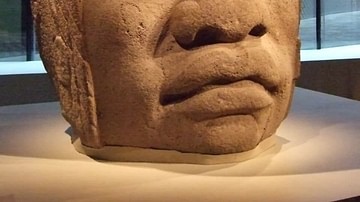
Image
Olmec Colossal Head
A basalt colossal head from the Olmec civilization of Mesoamerica. Provenance: Veracruz, Mexico, 1200-900 BCE. The significance of the heads is disputed but as no two heads are alike and each headdress has distinctive designs they may represent...

Article
The Mayan Pantheon: The Many Gods of the Maya
The pantheon of the Maya is a vast collection of deities worshipped throughout the regions of Yucatan, Quintana Roo, Campeche, Tabasco, and Chiapas in Mexico and southward through Guatemala, Belize, El Salvador and Honduras. These gods informed...
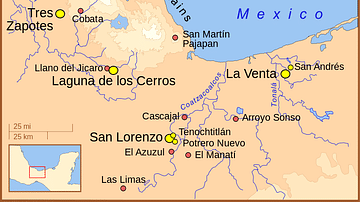
Image
Principal Olmec Settlements
A map showing the principal settlements of the Olmec civilization in Mesoamerica (modern-day Mexico) which flourished from c. 1200-300 BCE.
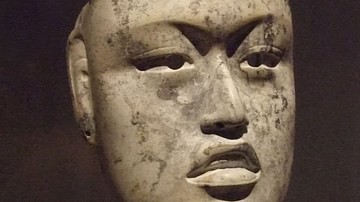
Image
Jadeite Olmec Mask
A mask of jadeite from the Olmec civilization of the Gulf coast, Mesoamerica, 900-500 BCE. Provenance: Rio Pesquero, Mexico. (Dallas Museum of Art)
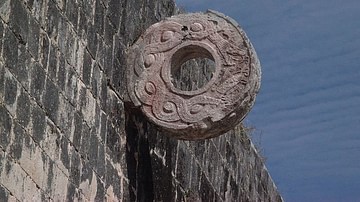
Image
Goal, Ball Court of Chichen Itza
One of the goals of the ball court at the Maya-Toltec city of Chichen Itza. The objective of the ball game, popular across Mesoamerica, was to strike a rubber ball through the hoop using any part of the body except the hands.
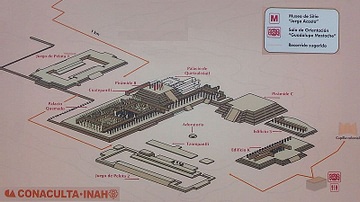
Image
Tollan (Tula)
A diagram of the sacred precinct at Tollan (Tula), the capital of the Toltec civilization (10-12th century CE) in Mesoamerica. The site includes two step pyramids, colonnades, a palace structure and two ball-courts.
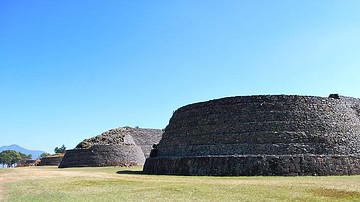
Image
Tarascan Yacata, Tzintzuntzan
The distinctive pyramid structures of the Tarascan capital Tzintzuntzan, Late Post-Classical period (1350-1520 CE). These structures, known as yacata, are unique in Mesoamerica and combine rectangular and circular stepped pyramids on a large...